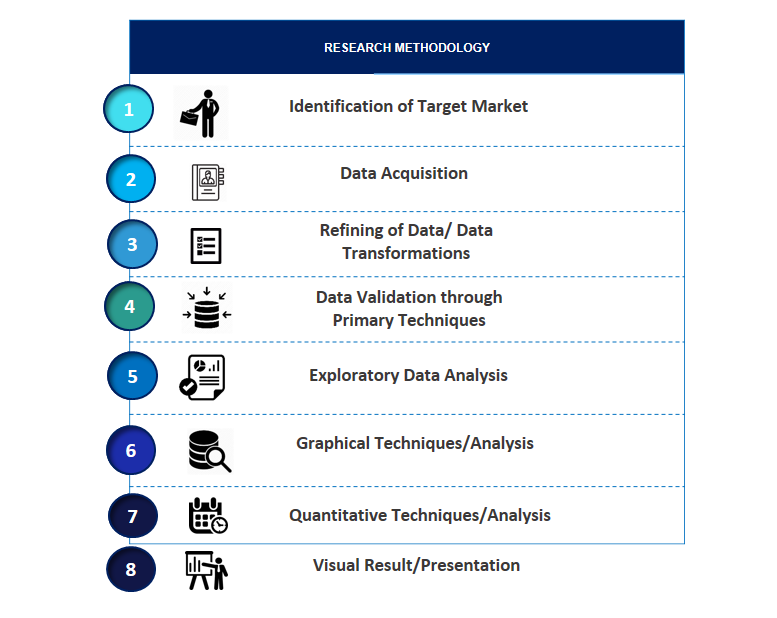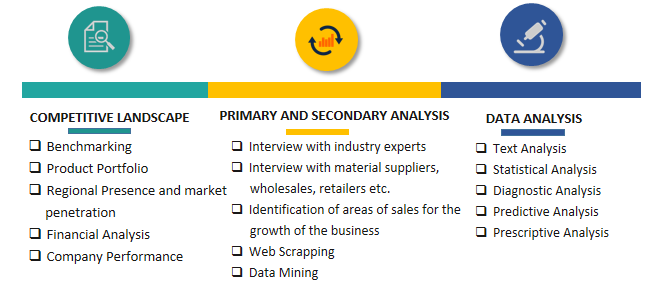United States Chemical Sensors Market Introduction and Overview
According to SPER Market Research, the United States Chemical Sensors Market is estimated to reach USD 8932.79 million by 2033 with a CAGR of 6.63%.
The report includes an in-depth analysis of the United States Chemical Sensors Market, including market size and trends, product mix, applications, and supplier analysis. Chemical sensors are analytical instruments that translate chemical information into readable signals by identifying and measuring certain chemical compounds in a variety of situations. They are made up of a transducer that transforms the response into an electrical signal for analysis and a sensing device that interacts with the target analyte. Chemical sensors are widely employed in numerous applications, including environmental monitoring, food safety, healthcare, and industrial operations. They are essential in identifying contaminants, keeping an eye on gas concentrations, and guaranteeing the quality of products. The creation of extremely sensitive and selective sensors has improved detection limits and reaction times. This is due to advancements in materials science and nanotechnology.
- March 2021; Through its partnership with Benchmark Electronics, a strategic contract manufacturer, Ouster Inc., a provider of high-resolution digital lidar sensors for the industrial automation, smart infrastructure, robotics, and automotive industries, announced scaling of production while achieving major automotive milestones. The business made clear that its goal in partnering with Benchmark is to quickly accelerate capacity to satisfy the high volume demands of automotive clients.
- January 2021; The first 3-in-1 industrial sensor featuring vibration, temperature, and speed was introduced by Petasense. Users may only collect measurements when the asset is functioning or within the designated speed ranges thanks to the integrated speed detection. Multiple sensors on the asset train can provide synchronized readings by communicating with one another with embedded smart sensing.
Market Opportunities and Challenges
Opportunities- The chemical sensors industry in the US offers a lot of room for expansion and innovation. The requirement for sophisticated sensing technologies to identify dangerous compounds in the air, water, and soil is driven by the growing need for pollution management and environmental monitoring. Opportunities are further enhanced by the growing healthcare industry, as chemical sensors are critical to medication discovery, patient monitoring, and medical diagnostics. The need for integrated chemical sensors that provide real-time data collecting and analysis is being driven by the emergence of smart technologies and Internet of Things applications. Additionally, there are potential for sensors to detect pollutants due to the increased attention on quality and safety in the manufacturing of food and beverages.
Challenges- Numerous obstacles might prevent the chemical sensors industry in the US from expanding. A major obstacle is the high expense of creating and producing sophisticated sensors, which might prevent smaller businesses and startups from accessing them. Furthermore, it can be challenging to guarantee the precision and dependability of sensors in a variety of environmental settings since elements like humidity, temperature, and interference from other substances can all have an impact on performance. Continuous innovation is required due to the quick rate of technical breakthroughs, which can put a strain on resources and expenditures. Moreover, producers may face obstacles in the form of longer lead times and higher market entry costs due to regulatory compliance, performance and safety criteria.
Market Competitive Landscape
The United States Chemical Sensors Market is highly competitive, with key players driving innovation, sustainability, and strong supply chains to maintain market leadership. Leading companies in the industry are AirTest Technologies Inc, Smiths Detection Inc, General Electric, Hans Turck GmbH & Co. KG, Honeywell International Inc, and Others.
Scope of the report:
| Report Metric | Details |
| Market size available for years | 2020-2033 |
| Base year considered | 2023 |
| Forecast period | 2024-2033 |
| Segments covered | By Product Type, By Application
|
| Regions covered | Northeast Region, Midwest Region, South Region, West Region
|
| Companies Covered | AirTest Technologies Inc, Smiths Detection Inc, General Electric, Hans Turck GmbH & Co. KG, Honeywell International Inc, MSA Safety Incorporated, Pepperl+Fuchs Group, SenseAir AB, SICK AG, Siemens AG.
|
COVID-19 Impact on United States Chemical Sensors Market
The COVID-19 pandemic had a huge influence on the United States chemical sensors industry, altering both demand and supply chains. At first, the epidemic caused delays in production and delivery due to interruptions in logistics and manufacturing. On the other hand, the pandemic hastened the use of chemical sensors in medical environments to track the spread of viruses and guarantee patient safety. A growing need was seen for sensors utilized in diagnostic equipment and personal protective equipment. In addition, interest in sensors for pathogen and pollutant monitoring was sparked by increased consciousness of environmental safety and air quality. The epidemic finally highlighted the significance of trustworthy chemical sensing technology across a range of applications as companies adjusted to the new normal.
Key Target Audience:
- Chemical sensor manufacturers
- Healthcare and medical device companies
- Environmental monitoring agencies
- Food and beverage industry
- Oil and gas industry
- Automotive manufacturers
- Research and development institutions
- Government regulatory bodies
- Agriculture and farming sectors
- Industrial automation companies
Our in-depth analysis of the United States Chemical Sensors Market includes the following segments:
| By Product Type: | Electrochemical Optical Pallister/Catalytic Bead Others |
| By Application: | IndustrialMedicalEnvironmental MonitoringDefenseHomeland Security Others |
Key Topics Covered in the Report:
- United States Chemical Sensors Market Size (FY’2024-FY’2033)
- Overview of United States Chemical Sensors Market
- Segmentation of United States Chemical Sensors Market By Product Type (Electrochemical, Optical, Pallister/Catalytic Bead)
- Segmentation of United States Chemical Sensors Market By Application (Industrial, Medical, Environmental Monitoring, Defense and Homeland)
- Statistical Snap of United States Chemical Sensors Market
- Expansion Analysis of United States Chemical Sensors Market
- Problems and Obstacles in United States Chemical Sensors Market
- Competitive Landscape in the United States Chemical Sensors Market
- Impact of COVID-19 and Demonetization on United States Chemical Sensors Market
- Details on Current Investment in United States Chemical Sensors Market
- Competitive Analysis of United States Chemical Sensors Market
- Prominent Players in the United States Chemical Sensors Market
- SWOT Analysis of United States Chemical Sensors Market
- United States Chemical Sensors Market Future Outlook and Projections (FY’2024-FY’2033)
- Recommendations from Analyst
1. Introduction
1.1. Scope of the report
1.2. Market segment analysis
2. Research Methodology
2.1. Research data source
2.1.1. Secondary Data
2.1.2. Primary Data
2.1.3. SPER’s internal database
2.1.4. Premium insight from KOL’s
2.2. Market size estimation
2.2.1. Top-down and Bottom-up approach
2.3. Data triangulation
3. Executive Summary
4. Market Dynamics
4.1. Driver, Restraint, Opportunity and Challenges analysis
4.1.1. Drivers
4.1.2. Restraints
4.1.3. Opportunities
4.1.4. Challenges
4.2. COVID-19 Impacts of the United States Chemical Sensors Market
5. Market variable and outlook
5.1. SWOT Analysis
5.1.1. Strengths
5.1.2. Weaknesses
5.1.3. Opportunities
5.1.4. Threats
5.2. PESTEL Analysis
5.2.1. Political Landscape
5.2.2. Economic Landscape
5.2.3. Social Landscape
5.2.4. Technological Landscape
5.2.5. Environmental Landscape
5.2.6. Legal Landscape
5.3. PORTER’s Five Forces
5.3.1. Bargaining power of suppliers
5.3.2. Bargaining power of buyers
5.3.3. Threat of Substitute
5.3.4. Threat of new entrant
5.3.5. Competitive rivalry
5.4. Heat Map Analysis
6. Competitive Landscape
6.1. United States Chemical Sensors Market Manufacturing Base Distribution, Sales Area, Product Type
6.2. Mergers & Acquisitions, Partnerships, Product Launch, and Collaboration in United States Chemical Sensors Market
7. United States Chemical Sensors Market, By Product Type (USD Million) 2020-2033
7.1. United States Chemical Sensors Market Size, Share and Forecast, By Product Type, 2020-2026
7.2. United States Chemical Sensors Market Size, Share and Forecast, By Product Type, 2027-2033
7.3. Electrochemical
7.4. Optical
7.5. Pallister/Catalytic Bead
7.6. Others
8. United States Chemical Sensors Market, By Application (USD Million) 2020-2033
8.1. United States Chemical Sensors Market Size, Share and Forecast, By Application, 2020-2026
8.2. United States Chemical Sensors Market Size, Share and Forecast, By Application, 2027-2033
8.3. Industrial
8.4. Medical
8.5. Environmental Monitoring
8.6. Defense
8.7. Homeland Security
8.8. Others
9. United States Chemical Sensors Market, By Region, 2020-2033 (USD Million)
9.1. United States Chemical Sensors Market Size and Market Share By Region (2020-2026)
9.2. United States Chemical Sensors Market Size and Market Share By Region (2027-2033)
9.3. Northeast Region
9.4. Midwest Region
9.5. South Region
9.6. West Region
10. Company Profile
10.1. AirTest Technologies Inc
10.1.1. Company details
10.1.2. Financial outlook
10.1.3. Product summary
10.1.4. Recent developments
10.2. Smiths Detection Inc
10.2.1. Company details
10.2.2. Financial outlook
10.2.3. Product summary
10.2.4. Recent developments
10.3. General Electric
10.3.1. Company details
10.3.2. Financial outlook
10.3.3. Product summary
10.3.4. Recent developments
10.4. Hans Turck GmbH & Co. KG
10.4.1. Financial outlook
10.4.2. Product summary
10.4.3. Recent developments
10.5. Honeywell International Inc
10.5.1. Company details
10.5.2. Financial outlook
10.5.3. Product summary
10.5.4. Recent developments
10.6. MSA Safety Incorporated
10.6.1. Company details
10.6.2. Financial outlook
10.6.3. Product summary
10.6.4. Recent developments
10.7. Pepperl+Fuchs Group
10.7.1. Company details
10.7.2. Financial outlook
10.7.3. Product summary
10.7.4. Recent developments
10.8. SenseAir AB
10.8.1. Company details
10.8.2. Financial outlook
10.8.3. Product summary
10.8.4. Recent developments
10.9. SICK AG
10.9.1. Company details
10.9.2. Financial outlook
10.9.3. Product summary
10.9.4. Recent developments
10.10. Siemens AG
10.10.1. Company details
10.10.2. Financial outlook
10.10.3. Product summary
10.10.4. Recent developments
10.11. Others
11. Conclusion
12. List of Abbreviations
13. Reference Links
SPER Market Research’s methodology uses great emphasis on primary research to ensure that the market intelligence insights are up to date, reliable and accurate. Primary interviews are done with players involved in each phase of a supply chain to analyze the market forecasting. The secondary research method is used to help you fully understand how the future markets and the spending patterns look likes.
The report is based on in-depth qualitative and quantitative analysis of the Product Market. The quantitative analysis involves the application of various projection and sampling techniques. The qualitative analysis involves primary interviews, surveys, and vendor briefings. The data gathered as a result of these processes are validated through experts opinion. Our research methodology entails an ideal mixture of primary and secondary initiatives.


